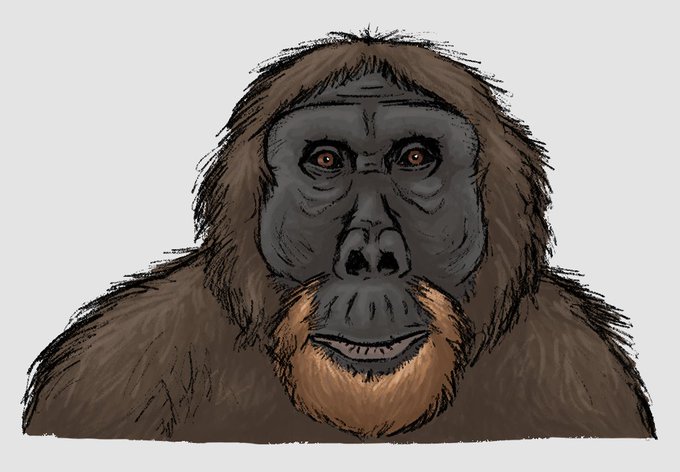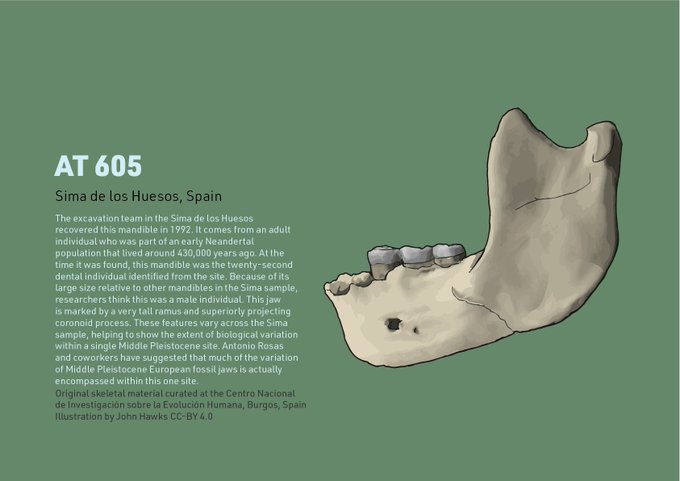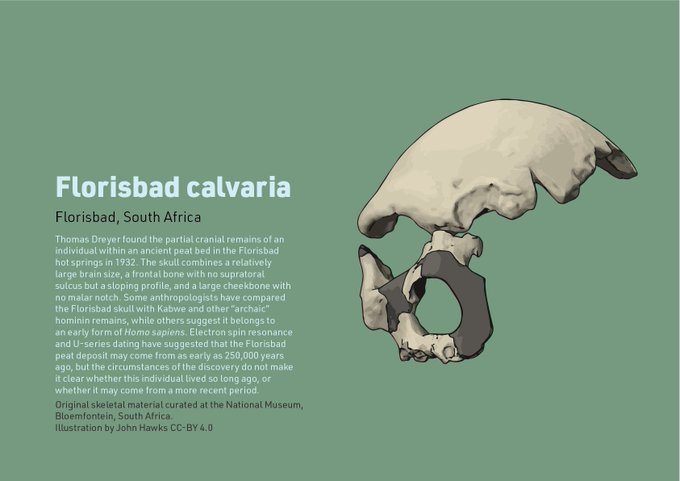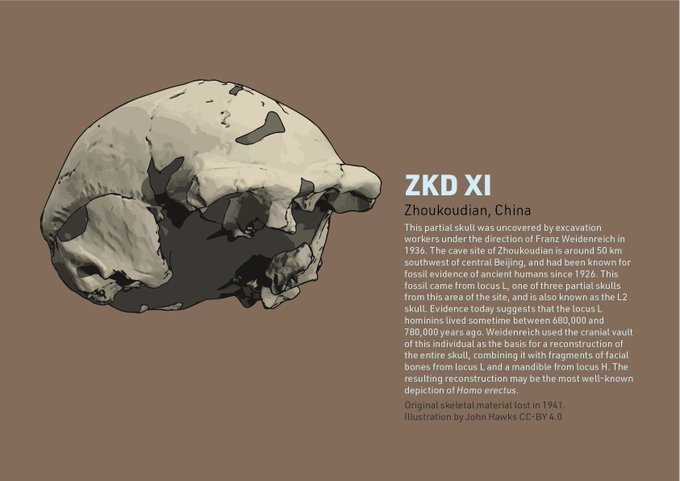paleoanthropologyのTwitterイラスト検索結果。 121 件
#OnThisDay in 1908, a pickaxe struck the side of a remarkable skull. It was the discovery of the Neanderthal known as the Old Man from La Chapelle, one of the most important specimens in the history of paleoanthropology. #fossils
An attempt to help visualize the results from Ni, et al. 2021 (one of the Harbin Skull papers). The left shows the morphological tree in the paper; the right is the DNA/proteomics constrained but less parsimonious tree from the supplementary material. #paleoanthropology
Taphonomic-forensic analysis of #hominin skulls from Sima de los Huesos by @JuanLuisArsuaga
et al. Of 20 known skulls, 17 have healed depression fractures. "Recurrent acts of lethal violence…thus seem evident."
https://t.co/02AJcqOP8L
#FossilFriday #paleoanthropology #hominid
University of Oxford researchers create largest ever human family tree #archaeology #anthropology #paleoanthropology https://t.co/bqtD0742Wi
Paleoanthropologists Find Fossil Remains of Immature Homo naledi
https://t.co/ADsBEE3nhr
#anthropology #paleoanthropology #science
This might be one of my better little reconstructions when treated in isolation. Based on latest analyses that place Meganthropus near Lufengpithecus, aka as an ape. #meganthropus #paleoart #digitalart #paleoanthropology #historyofscience
Giant Sea Lizards Ruled the Waves While T. Rex Roamed on Land
#evolutionsoup #evolution #paleontology #paleoanthropology #science
👉🏽👉🏻https://t.co/CxZuerojFA
Meet Homo bodoensis, New Species of Human Ancestor
https://t.co/p3gjh1CRI8
#paleoanthropology #anthropology #science
#OnThisDay in 1908, a pickaxe struck the side of a remarkable skull. It was the Neanderthal known as the Old Man from La Chapelle, one of the most important discoveries in the history of paleoanthropology. #fossils
The Sima de los Huesos site is very important in understanding the kind of morphological variation that occurs within a single #hominin population. By itself, a jaw like AT 605 might seem like an outlier, but others within the sample share aspects of its form. #paleoanthropology
The LB6 fossil #hominin is the second most complete skeleton of Homo floresiensis from Liang Bua, Indonesia. The jaw appears to represent a smaller individual than the LB1 skeleton. Its complete radius, somewhat bent due to a break, is 157 mm long. #paleoanthropology
In 1999, a #hominin fossil was "found" in New York City. In this case, the fossil was repatriated to Indonesia where it belongs. Other fossils may still circulate within an illicit international antiquities trade. #paleoanthropology
Aroeira 3 was found in a context with abundant Acheulean tools and evidence of hominin-controlled fire. It is a valuable comparison to the Sima de los Huesos #hominin sample, at similar geological age but with only a single handaxe and no remains of fire. #paleoanthropology
MRD-VP-1/1 was the first relatively complete skull known for Australopithecus anamensis. Its similarities with later #hominin species like Au. africanus and Paranthropus may suggest that such traits evolved in the common ancestor of all bipedal hominins. #paleoanthropology
The Elandsfontein farm near Saldanha Bay, South Africa, has an extensive fossil deposit eroded from ancient sand dunes. The #hominin calvaria from this deposit is of unknown age, and is similar to some "archaic" human fossils. #paleoanthropology
The #hominin skull from Florisbad, South Africa, is a particular frustration for me. An effort to date the specimen made it a possible contemporary of #Homonaledi, but natural uranium concentration of hot spring peats likely makes this unreliable. #paleoanthropology
Renewed survey at fossil #hominin sites sometimes turns up additional fragments of earlier discoveries. The LH 5 fragmentary maxilla and dentition of Australopithecus afarensis has parts that were discovered in 1974 and 1979, up to 49 meters apart. #paleoanthropology
Zhoukoudian was not the first discovery place of Homo erectus, but thanks to the work of Franz Weidenreich in the 1930s and 1940s, it became the prototype for the way later scientists understood this #hominin. One reason was his reconstruction of the L2 skull. #paleoanthropology
The femur and tibia from locality 129 were the first clear evidence of bipedal #hominin fossils from Hadar, Ethiopia, in 1973. The strong lateral angulation of the femur shaft is a distinctive aspect of bipedal locomotion in humans and our fossil relatives. #paleoanthropology

































